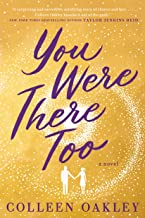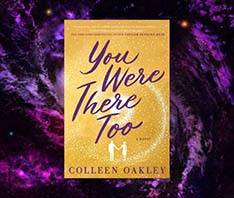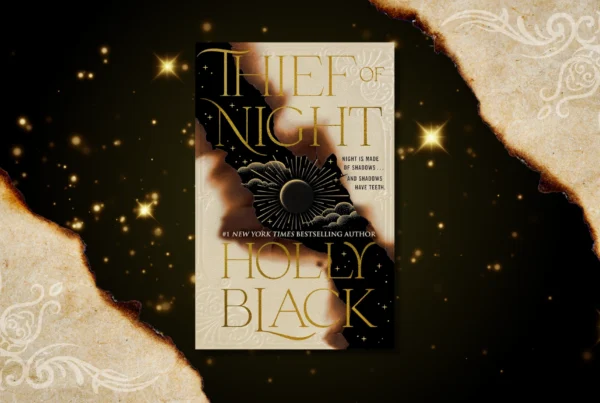You Were There Too by Colleen Oakley
What do dreams mean? What if we share a dream — does that mean something more? Colleen Oakley’s latest novel delves into the world of dreams with artful curiosity and exquisite precision. Many stories center around the topic of dreaming and psychic phenomenon. Incredibly, this book’s premise of strangers dreaming about each other and possibly being psychically drawn to each other is the very topic of an early Star Trek: The Next Generation series episode. And while that may be entertaining to science-fiction audiences, You Were There Too (Berkley) is not only an entertaining story, it’s a catalyst for thought.
As we begin the story, main character Mia Graydon is married, pregnant, an artist and new resident of small-town Hope Springs, and on the surface, happy. But as we dig into Mia’s life, we find issues abound. For one, she’s dreaming about this strange man (sometimes romantically) and has been for a while. And then there’s her decision, along with husband Harrison, to move to Hope Springs from the big city of Philadelphia — on a whim. Not to mention the overly cautious approach Mia has to her pregnancy.
But while the mystery abounds, so does the comedy. Oakley is great with subtle comedic dialogue and prose, a necessity if one is to write humor in a contemporary women’s fiction novel. Readers will find themselves chuckling during many scenes that may feel anecdotal but are actually weaving together a big picture of Mia’s destiny. For example, when Mia first decides to tell Harrison that she wants to start a family with him, seated over breakfast at the local diner, he’s stunned. So, of course, he asks Mia, “Can I finish my bacon first?” These understated humorous additions kept me turning the pages and gave the story a relatability that even Star Trek may have had trouble pulling off.
SHIFTING NARRATIVE VIEWPOINTS
You Were There Too is told in first-person, mostly through Mia’s point of view; however there are a few chapters in third person from other characters, and a later chapter sectioned to provide multiple points of view. Throughout the book, this approach gives the reader just the right amount of story information outside of Mia’s purview to push the story forward, and at times, creates more mystery and causes us to wonder what happens next.
The ending multiple points of view provide richness and discovery, akin to peeling back layers of a Roseto to make a more luscious open flower. It also helps pull in all those threads — scenes that may have seemed small at the time, or scenes where you weren’t sure how they fit into the story — into that big picture Oakley “paints” of Mia’s destiny. And at this point, readers will have met other beloved characters too and will want to know what happens to them. Having their points of view here will satisfy readers’ curiosity while keeping the story flowing.
But above all, readers will come away wondering — about dreams and the strangers in them. About what their dreams may mean and how they might manifest in the future. I know I did.
You Were There Too is available for purchase.
Buy this Book!
Amazon




